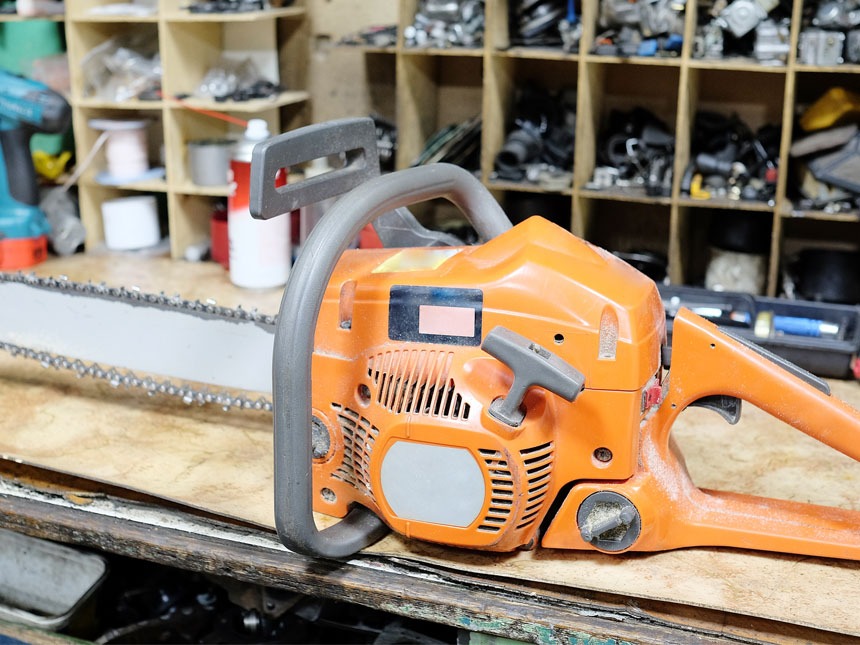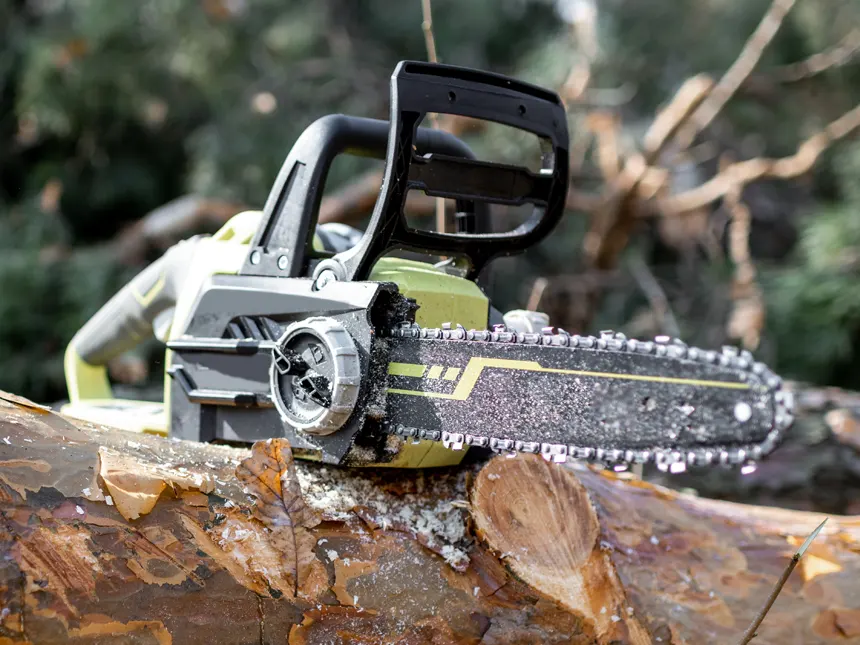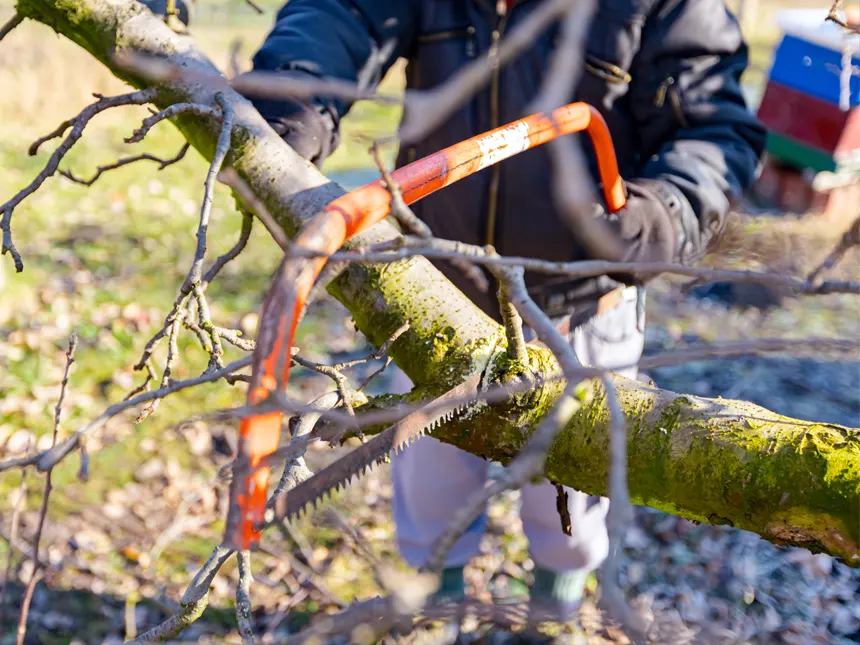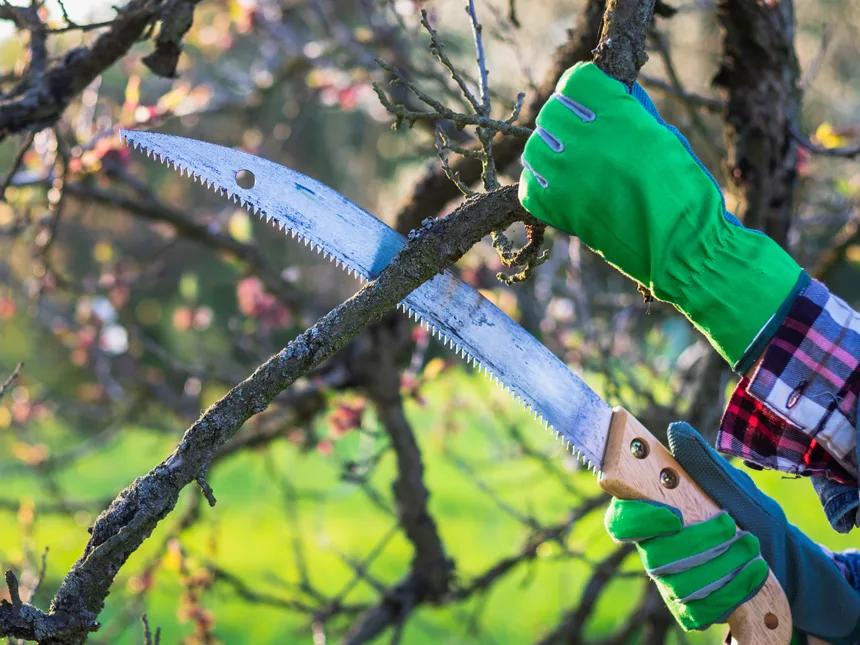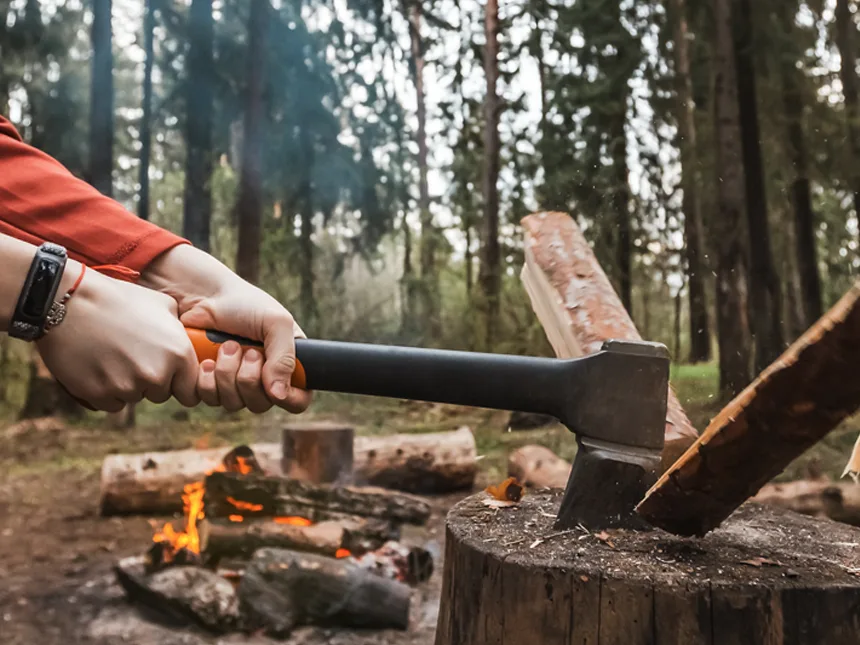How Long to Dry Firewood: Beginner’s Guide
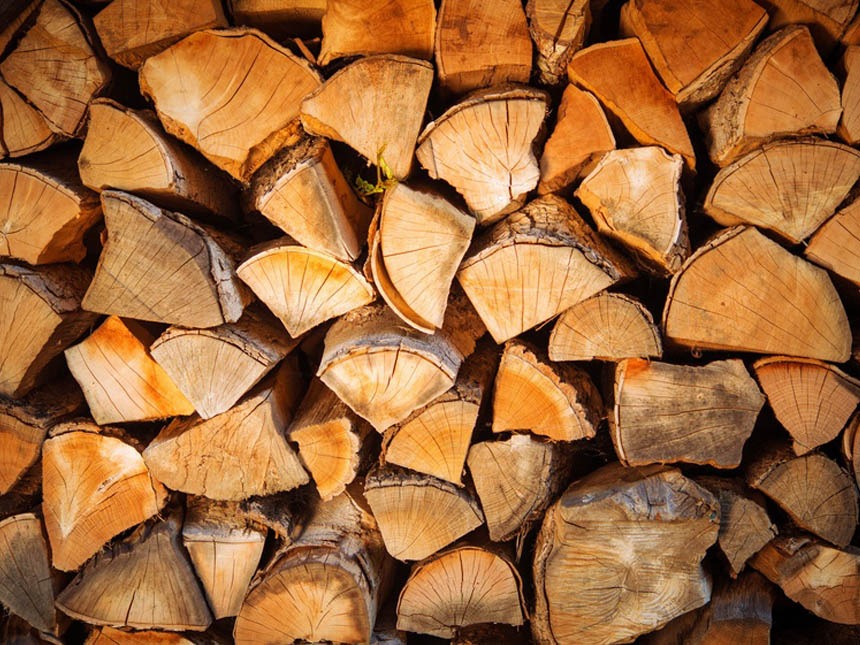
Timber Gadgets is reader-supported. We may earn a commission if you buy through the links on our site.
When dry or “seasoned” firewood has a moisture content at or below 20%, it’s ready to burn. How long does it take to get there? Well, I’ll answer that question in this post.
Most firewood seasons within 6 – 18 months and there are many variables that affect the time it takes to dry. Hardwoods take more time to dry because they’re denser than softwood. Some hardwood takes up to 2 years to season.
From the type of wood you’re using (species of tree) to the changes in climate that year, the length of the log, and the way you store it all play a role in the drying time. I considered making a drying chart for this page but there are simply too many variables to contend with.
I will, however, share some tips on how to properly dry your firewood in the sections below. First I’m going to teach you how to check if the wood is seasoned.
Table of Contents
How to Tell When Logs are Seasoned
There are a few tried-and-true methods to determine whether or not your firewood is ready to burn. Whether you’ve cut the wood yourself or you’re looking to purchase wood from a retailer, here are some things to look for before throwing the wood on the burner.
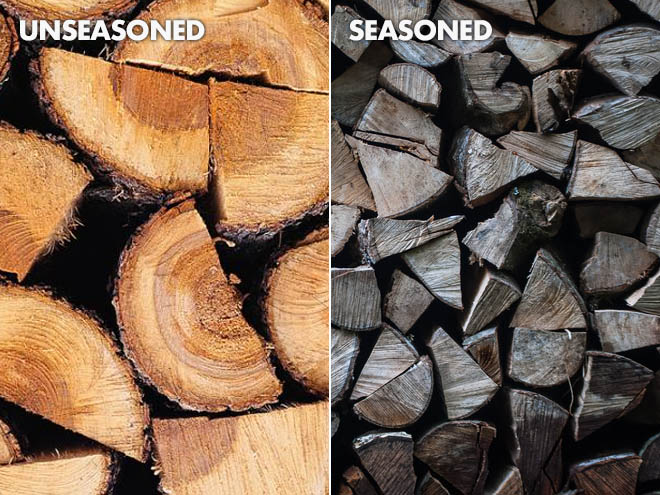
- Color – As wood seasons, its color begins to darken and fade. It transitions from a bright, fresh piece of green wood into a dull, grayish piece of dry firewood. The color is perhaps one of the best indicators of whether or not the wood is ready. See the picture above for a good example.
- Smell – Using a small hatchet or your preferred cutting tool, cut the log so you can smell it. Sniff the freshly cut piece; if there is a strong aroma, it’s still too wet to use. Also, if you notice the cut piece is damp, that’s also a good indicator it should not be burned yet.
- Weight – Dry wood weighs less than green wood, naturally. By this point, we’ve established that it’s water inside the wood that’s keeping you from throwing freshly cut logs on the fire. So naturally, as the water leaves the wood it becomes lighter. Greenwood weighs almost twice as much as dry wood; a cord of dry oak weighs a little under 5,000 lbs while a cord of green oak is just under 8,000 lbs.
- Bark – As the wood begins to dry out, its bark loosens and eventually falls off. In an entire cord of seasoned wood, most of the logs will no longer have bark.
- Cracks – Another great indicator is cracking. Look for cracks starting at the heartwood (the center of the log) and going out to the sapwood (the outer parts of the log). As the wood dries, the wood begins to shrink which causes these cracks. Fresh or “green” wood will not have these cracks whereas seasoned wood is more likely to have cracks and breaks.
Using a Moisture Meter
The best way to check the moisture in your firewood is by using a moisture meter. These little devices are typically hand-held, having an LCD display that outputs the percentage of moisture within the wood.
As I mentioned at the beginning of this page, firewood is best used when the moisture is under 20%. Something between 15% – 20% is ideal.
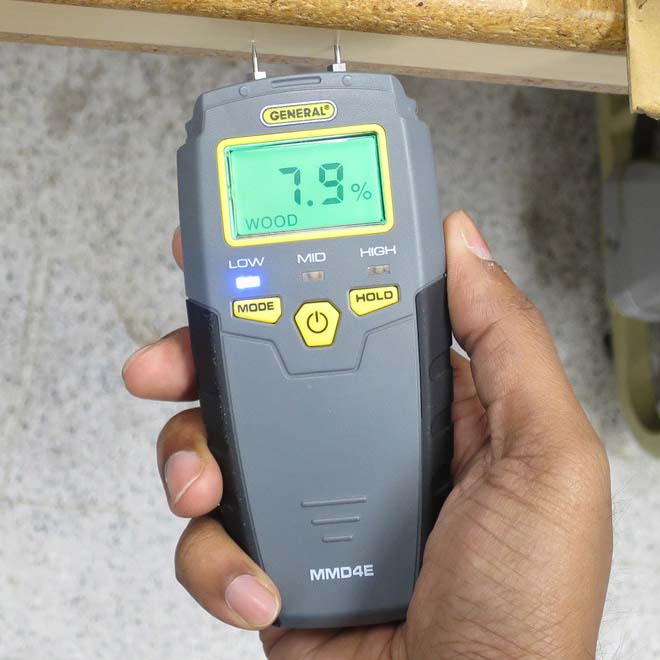
A moisture meter has two prongs on the end. To check the wood, insert the prongs into the wood at the place you want to check. In order to get a more accurate reading, you need to test several places. The most important is the center of the log. Use a hatchet or small axe to split the log in half. Once finished, test the center of the log with the moisture meter.
You can spend as much as you want on a moisture meter but the General Tools company makes a nice, inexpensive moisture reader which works great and has thousands of positive reviews.
Tips for Storing and Drying Wood Faster
Now that you know how to tell if your firewood is seasoned, I’ll give you some tips for drying the wood that isn’t quite ready to burn. Remember, anything above 20% moisture content isn’t quite ready.
The fastest way to dry wood is by use of a kiln. They’re typically found in commercial environments where large amounts of lumber are processed. Since most of us don’t own one of these, I’ll share with you the next best things you can do to dry your firewood fast.
Remember, the yearly climate plays a big role in how long it takes your firewood to dry. Hot, dry summers will dry out a piece of wood better than a cool, damp summer will.
- Increase the Air Circulation – Increasing the airflow to and around each piece of wood is one of the best ways to speed up the entire drying process. If possible, stack the wood on a rack off the ground. This will allow the air to flow underneath. Along the same lines, don’t stack the wood against a wall; there is no way for air to circulate behind the wood.
- The size of the Log Matters – Cutting the logs to fit inside your fireplace is common sense, but this actually helps in the drying process. Generally speaking, a smaller log will dry out faster than a larger log. Not only will it help each piece dry a little faster, but it also saves you from having to process the firewood again before using it.
- Let the Sun do the Work – Spreading your freshly cut logs on a sidewalk, driveway, or drying rack out in the sun is another great way to speed up the process. Having each piece of wood exposed to the sun is helpful. In stacks, the bottom pieces won’t dry as fast because they’re out of direct sunlight. Some people don’t have enough room to do this, which is understandable. Instead, pay close attention to the top layer of firewood as it will dry faster. As they become dry, move them to your storage rack which will expose the second layer of wood to the sun.
- Stacking the Right Way – Moisture mainly exits wood from the cut ends; not the center. For this reason, it’s best to have both ends of wood exposed to the wind. A rack of firewood stacked out in the open, with both sides exposed, will dry faster than a rack stacked against the side of a barn.
So what is the takeaway from all this? Simple steps can speed up the drying process. You still have to wait several months, but it will help. Use the tips above to determine whether or not your firewood is seasoned and get yourself a moisture meter to be sure.
Related:
- The Best Splitting Mauls (and where to buy them)
- Tools for Splitting Logs & Kindling
- What is a Double-bit Axe?
FAQs
This section will answer some of the most frequently asked questions. If you need help with something not mentioned on this page, please ask in the comment section below.
Burning unseasoned or freshly cut wood poses a handful of problems. The first and most obvious; it’s more difficult to get a fire started. Not only that but it’s harder to keep the fire going once you finally get it started. Also, wet wood produces more smoke which blackens any glass window you have in front of the fire. On top of that, the smell will blanket your house.
Most importantly, however, is that unseasoned wood leaves more creosote in your flue pipe. Creosote is a byproduct of burning wood and it can be dangerous. Third-degree creosote, for example, is the most dangerous. It’s black tar which is highly flammable. Chimney fires can lead to house fires which is why it’s important to get your chimney inspected every year and restrain yourself from burning unseasoned firewood!
It’s not necessarily the age you have to worry about; it’s the amount of moisture within the wood. Wood dries over time so one could assume after many years, the moisture level will be really low. That’s true in some cases but it depends on how you store the wood too. Keeping your firewood outside, exposed to natural humidity, usually keeps the moisture content of the wood above 10%. This always depends on your local climate, of course.
The dryer the wood is, the faster it will burn. More smoke is produced and with enough airflow, the fire can get out of hand. So, burning really dry wood can be problematic but that’s usually not an issue. Get yourself a digital moisture meter to be sure.
Covering your firewood with a tarp is a topic of debate within the wood-burning community. When most people ask about using a tarp, I think they mean temporarily. As in, I’ve got a cord of freshly cut firewood, and it’s about to rain – what should I do? By all means, cover it with a tarp for a few days or until it stops raining. There is no problem using a tarp to cover your firewood temporarily. However, using a tarp can become a problem when it’s left on the wood for too long.
When a tarp covers your pile of wood, it locks in natural humidity and blocks airflow. These conditions are perfect for mold to grow. Especially if the wood is sitting on the ground, soaking up water. So to answer the question; yes, it’s okay. Just don’t leave it there too long. Also, see our post about how to avoid termites in your firewood.
but has plenty of open space for air to flow through.
TLDR; How Long Does It Take To Season Firewood?
Simply put, firewood is properly seasoned when the moisture content is below 20%. The preferred range is between 15% – 20% for most firewood.
The time it takes a log to “season” depends on the type of wood and when it was harvested. Softwood tends to season faster than hardwood.

